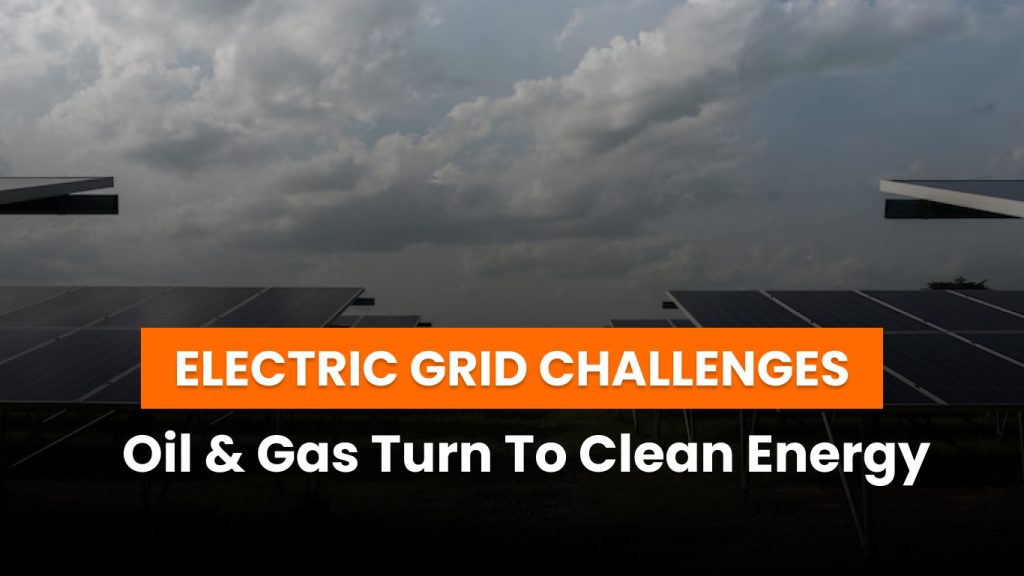Introduction
Across the United States, electricity demand is rising rapidly – so much so that the power grid is struggling to keep up in many regions. The U.S. Energy Information Administration recently raised its forecast for commercial electricity sales through 2025 due to faster-than-expected growth in consumption. This surge is especially pronounced in many oil-producing states, where new projects are hungry for power. Oil and gas companies have been increasingly electrifying their operations – replacing diesel engines and gas-fired equipment with electric motors, pumps, and drilling rigs – both to reduce emissions and to cut costs. According to a recent industry survey, 88% of oil and gas operators say they are either currently electrifying parts of their operations or evaluating electrification.
However, getting enough clean electricity is becoming a major challenge for these companies. In several key regions, at least half of oil and gas executives report difficulty obtaining the power they need for new projects. The existing grid infrastructure simply can’t deliver power fast enough to meet the growth. If the grid cannot keep pace with surging demand, oil and gas developers face tough choices: either slow down development plans while waiting for grid upgrades, compete with other industries for a finite supply of new clean power, or generate their own electricity on-site. Increasingly, companies are choosing the third option – finding innovative ways to source energy for their operations independent of the congested grid.
A leading clean energy company sponsored a survey of oil and gas industry leaders to pinpoint how these firms are getting the electricity they require. The survey identified seven key strategies that oil and gas operators are using to secure reliable clean energy for their facilities. These range from purchasing green power through utilities to building self-sufficient renewable energy systems on-site. Below we outline these strategies and how they are helping bridge the power gap.
Strategies for Securing Clean Energy in Oil & Gas
- Grid Power with Renewable Energy Credits (RECs): Many oil and gas companies continue to buy electricity from the local grid but pay a premium to ensure it’s “green” power. In practice, this means purchasing renewable energy credits to offset the source of their grid electricity. About 30% of surveyed companies said they use a clean energy option from their utility or retail provider in which their grid power is matched with renewable energy credits. Another 54% are actively pursuing such clean power options. This is an easy first step toward cleaner operations, but it depends on the grid’s capacity – in areas with grid constraints, buying RECs doesn’t help if the physical power can’t reach the project.
- Off-Site Renewable Projects (PPAs): Some operators secure clean energy through power purchase agreements (PPAs) or similar contracts with off-site renewable energy projects. Around one-third of oil and gas firms have arrangements to buy power from large solar or wind farms located away from their facilities, and nearly half are looking into this solution. This approach can supply a significant amount of clean electricity, but it’s often limited by transmission bottlenecks – the grid can only carry so much power from far-off wind and solar plants without costly upgrades. To bypass grid limitations, some companies invest in virtual PPAs, which credit them with renewable generation without requiring a direct physical power line from the project.
- On-Site Renewable Energy: A growing number of oil and gas sites are installing their own renewable energy sources – typically solar panels (and occasionally small wind turbines) – right at their operations. Roughly 29% of companies have developed on-site renewable generation, and nearly half are considering or pursuing such projects. For example, a remote oil field might set up a solar farm at a well pad or processing facility to directly power electric pumps and compressors. By producing electricity on-site, companies become less reliant on the grid. Sunhub plays a role here by providing high-quality solar panels and related equipment that can withstand harsh field conditions. Leveraging Sunhub’s solar solutions, oil and gas operators can deploy reliable on-site renewable power systems to help meet their energy needs.
- On-Site Battery Storage: Alongside on-site generation, many operators are investing in battery energy storage systems to store electricity for use during peak demand or when renewable output dips. About 27% of surveyed companies already use on-site battery storage and another 45% are actively pursuing it. These industrial-scale battery banks charge up when excess power is available (for instance, on sunny or windy days when on-site renewables produce surplus energy) and then discharge to supply power when needed at night or during periods of high demand. By smoothing out fluctuations and providing backup power, batteries make on-site renewables far more dependable for critical oilfield operations. Sunhub also supplies advanced battery storage solutions that integrate with solar installations, enabling a more resilient on-site power supply for remote facilities.
- Microgrids: A microgrid is a self-contained energy network at a site, often combining on-site generation, battery storage, and smart controls to manage loads. Oil and gas companies are increasingly embracing microgrids to ensure reliability and optimize energy use. Nearly half of respondents said their company is evaluating microgrids, and about 35% have already implemented one at some scale. A microgrid can run in parallel with the main grid or independently in “island mode.” For remote drilling sites or offshore platforms, microgrids allow continuous operations by orchestrating solar panels, batteries, and backup generators even if the main grid power is unavailable or unreliable. These setups, managed by intelligent control systems, maximize the use of on-site renewables while guaranteeing the 24/7 power needed for drilling, pumping, and processing equipment.
- Energy Management and Efficiency: Many oil and gas companies are going back to basics – and also leveraging digital tools – to reduce energy consumption. About two-thirds have adopted advanced software and analytics to optimize how and when equipment runs, cutting waste and emissions. In parallel, nearly half have brought in independent energy consultants or invested in efficiency upgrades to further trim their power needs. By improving energy management and efficiency, operators not only ease the burden on the grid but also save on energy costs.
Conclusion
The survey results make it clear that as the electric grid struggles to meet new demand, oil and gas companies are proactively adopting a mix of clean energy strategies to keep their projects powered. In effect, these firms are becoming pioneers of distributed energy – building solar farms at their facilities, installing batteries, and optimizing every watt of electricity. By doing so, they not only secure the energy needed to expand operations but also advance their environmental goals by reducing reliance on diesel generators and high-carbon grid power.
Crucially, partnerships with clean energy solution providers like Sunhub help accelerate this transition. By leveraging Sunhub’s expertise in solar and energy storage, oil and gas operators can deploy reliable on-site energy systems faster and more cost-effectively, without having to become renewable energy experts themselves. In an era of grid uncertainty, this capability is a game-changer.
In essence, even as the grid catches up, oil and gas producers are forging their own cleaner path by investing in self-sustaining energy solutions – ensuring they can meet new power demands sustainably and securely.




